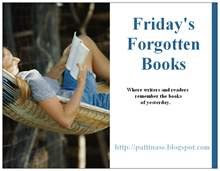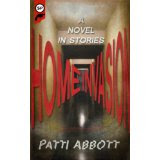(from the archives)
John P. Marquand and John O’Hara were the pre-eminent chroniclers of American life in the first half of  the 20th
century; and, in a way, their bodies of work describe the tension that
existed between the privileged WASP class of Marquand’s world and the
second-generation of (predominantly Catholic) Irish, Italian, German,
and Polish immigrants who came of age before World War II and about
whom O’Hara wrote so perceptively. O’Hara’s characters may
not be able to get into the “right” schools or join the “right” clubs,
but with their strength and drive they bring a vitality that two
hundred years of entitlement has leeched out of Marquand’s characters. If
you read O’Hara’s and Marquand’s work side-by-side, you’ll see much of
the American assimilation saga played out there on the page.
the 20th
century; and, in a way, their bodies of work describe the tension that
existed between the privileged WASP class of Marquand’s world and the
second-generation of (predominantly Catholic) Irish, Italian, German,
and Polish immigrants who came of age before World War II and about
whom O’Hara wrote so perceptively. O’Hara’s characters may
not be able to get into the “right” schools or join the “right” clubs,
but with their strength and drive they bring a vitality that two
hundred years of entitlement has leeched out of Marquand’s characters. If
you read O’Hara’s and Marquand’s work side-by-side, you’ll see much of
the American assimilation saga played out there on the page.
Unfortunately, if John O’Hara is remembered today, it is as the writer of sexy 1950s blockbuster novels such as BUTTERFIELD 8 and RAGE TO LIVE (both of which were made into indifferent movies). But John O’Hara’s real métier was the short story. For over fifty years, starting in 1927 and ending just before his death in 1970, the prolific O’Hara published more than 200 stories in the New Yorker alone (not to mention many more stories that appeared in other publications); in fact, O’Hara was, in large part, responsible for shaping what we now consider to be the classic "New Yorker short story.”
The stories in this collection represent that half-century span, the first was originally published in 1927, the last in 1966. They range in length from a couple of pages to novellas. These are not stories with twists or surprise endings; they are character studies of people defined and limited both by their own choices and by social factors beyond their control. Outcomes proceed organically from the interactions of characters and the fundamental underpinnings of their personalities. Many of them are set in and around the fictional town of Gibbsville, Pennsylvania, and are narrated by Jim Malloy, the local doctor’s son, a fictional stand-in for O’Hara. A few others are set in New York or Los Angeles. One of the best of the L.A. stories is “Nautica Jackson,” about the devastating revenge committed by a woman who discovers her husband is having an affair with a movie starlet.
My favorite story in this collection is “Imagine Kissing Pete,” which explores thirty years in a mismatched marriage. Bobbie marries Pete on the rebound in 1929; friends assume the couple will soon divorce. But the Depression hits, there isn’t money to divorce, then the children come, and the couple remain married through ups and downs, separations, the Depression, downward mobility, hard times, the war, and eventual post-war prosperity. This is not a happy marriage—there’s heavy drinking (every O'Hara character seems to easily consume a fifth a day), casual (and not-so-casual) infidelity on both sides, anger, recriminations, and physical violence, but the marriage endures. The story ends with Bobbie and Pete attending the graduation of their youngest child from an Ivy League school in 1959.
The last story in the collection, “We’ll Have Fun,” is one that I wished would continue and have a happy ending for the main character, a hard-drinking Irish-American named Tony Costello. Costello loves and understands horses, picking up odd jobs from horse owners when he can and spending all of his money on alcohol But horses are on the way out; the rich owners who used to employ Tony are now buying automobiles; stables are being converted to garages; blacksmiths are closing their businesses. Then Tony helps a well-to-do woman who has inadvertently purchased a very sick horse. At the end of the story, Tony and the woman are planning a horse-buying trip together. Tony—despite his faults—is so committed to his love of horses that I was hoping he would be able to squeeze a happy ending out of his life. O’Hara promises no such thing, wisely ending the story before Tony’s drinking and haphazard lifestyle ruin another opportunity for him.
It’s unfortunate that O’Hara’s short stories are not more widely-read today. In their subtlety, range, social awareness, and precise dialog, they are a match for any of the more popular anthologized short stories of the last century. Anyone looking for reading material that is both entertaining and meaningful would not go wrong picking up a volume of O’Hara’s short stories.
















8 comments:
Nice reminder of O'Hara's work, Patti - I appreciate that. Why do so many fine authors just slip under the radar?
I'm a big fan of John O'Hara's work. I prefer his brilliant short stories to his novels.
Definitely.
The number of 20th century writers that are no longer read is staggering.
And then consider all the good ones that never were part of the Likely Suspects at various times. Or those who inspired those who came later, who did get more attention, however briefly. I strongly suspect I'm the only person who's brought up Wilma Shore anytime in the last ten years that you might've heard from, and how often have you heard references to Rudolf Wurlitzer recently? How many of those who directly influenced, say, Karen Russell or Jonathan Lethem are unknown to most reasonably literate readers? When did you last hear/read someone bring up even Jack Ritchie or Hortense Calisher?
I was reading mostly the third (last so far) collection of Dan Chaon stories, STAY AWAKE, and Amy Hempel's first collection, REASONS TO LIVE, this week. Chaon has a lot of similar themes in his stories, set often in his native Nebraska. Dead or gone mothers, estranged siblings, drinking, family issues, etc. To some extent, his titles tell the story: "I Wake Up," "Thinking of You in Your Time of Sorrow," the title story.
Hempel got a lot of attention for her story "In the Cemetery Where Al Jolson is Buried," as the narrator spends time with and tries to comfort a dying friend as best as she can.
Just started a Jess Walter collection.
Hortense Calisher I read at one time.
I like Chaon and Hempel. Short stories are the gateway drug to novels often.
Jess Walter, "Fran's Friend Has Cancer" - from THE ANGEL OF ROME. I enjoyed this one. An older couple (late '70s) is having lunch in a Midtown restaurant before a Wednesday matinee on Broadway. ("The average age at a Wednesday matinee is dead.") They are bickering as the long-married often do. She is going to Oregon for a couple of weeks to see her son and hos family, and the husband clearly is trying to guilt her into not going. Suddenly he notices the man sitting next to them is writing in a little notebook and - could it be? - he seems to be writing down what they're saying!
So sorry I missed both posting a Short Story Wednesday post and commenting here. We had a friend visiting from out of town so I could not put together a short story post in time, and then today we woke up to a power outage, which lasted until 5:00, and thus no internet all day.
That was a very interesting review, I will have to find some short stories from both John P. Marquand and John O’Hara.
I will definitely have a post next week.
Post a Comment